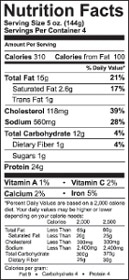Whether to count net or total carbs is a controversial topic within the low-carb community.For starters, the term “net carbs” isn’t officially recognized or agreed upon by nutrition experts. In addition, due to conflicting and outdated information, figuring out how to calculate net carbs can be confusing.In fact, the net carb claims on packaged foods may not reflect the number of carbs your body actually absorbs.Luckily, knowing how your body processes different types of carbs may help you achieve your target blood sugar, weight loss and health goals.This article looks at the science behind net carbs, provides simple calculations for determining your intake and discusses the pros and cons of counting net carbs.
What Are Net (Digestible) Carbs?
Net carbs are sometimes referred to as digestible or impact carbs. The terms refer to carbs that are absorbed by the body, including both simple and complex carbs.Simple carbs contain one or two sugar units linked together and are found in foods like fruits, vegetables, milk, sugar, honey and syrup.Complex carbs contain many sugar units linked together and are found in grains and starchy vegetables like potatoes.When you eat a carb-containing food, most of the carbs are broken down into individual sugar units by enzymes produced in your small intestine. Your body can only absorb individual sugar units.However, some carbs can’t be broken down into individual sugars, whereas others are only partially broken down and absorbed. These include fiber and sugar alcohols.Because of this, most fiber and sugar alcohols can be subtracted from total carbs when calculating net carbs.
Summary: Net (digestible) carbs are broken down into individual sugar units and absorbed into your bloodstream. However, your body processes fiber and sugar alcohol carbs differently than digestible carbs.
How Your Body Handles Fiber Carbs
 Fiber is a unique form of carbs in terms of its digestion and effects on your body.Unlike starch and sugar, naturally occurring fiber isn’t absorbed in your small intestine.This is because the links between sugar units can’t be broken down by the enzymes in your digestive tract. Therefore, fiber passes directly into the colon.However, its fate after that depends on what type of fiber it is.There are two broad categories of fiber: insoluble and soluble. About two-thirds of the fiber you eat is insoluble, while the other third is soluble.Insoluble fiber does not dissolve in water. It creates a bulkier stool and can help prevent constipation. This type of fiber leaves the colon unchanged, provides no calories and has no effect on blood sugar or insulin levels.By contrast, soluble fiber dissolves in water and forms a gel that slows down food’s movement through your system and can help make you feel full.After arriving in your colon, soluble fibers are fermented into short-chain fatty acids (SCFAs) by bacteria. These SCFAs help keep your gut healthy and may also provide a number of other health benefits.Studies have shown that the fermentation of 1 gram of soluble fiber to SCFAs provides about 1–2 calories, depending on the type of fiber.Since about one-third of the fiber in most foods is soluble, a serving of food containing 6 grams of fiber would contribute up to 4 calories in the form of SCFAs.However, while soluble fiber does provide a few calories, it doesn’t seem to increase blood glucose. In fact, the most recent research suggests that its effects in the gut help reduce blood sugar levels.Many studies have shown that soluble fiber may lead to better blood sugar control, increased insulin sensitivity and the absorption of fewer calories.On the other hand, one processed fiber called isomaltooligosaccharide (IMO) seems to be partially absorbed in the small intestine like non-fiber carbs, which may raise blood sugar.Recently, several food manufacturers replaced IMO with other forms of fiber in their products. However, IMO can still be found in a number of “low-carb” foods.
Fiber is a unique form of carbs in terms of its digestion and effects on your body.Unlike starch and sugar, naturally occurring fiber isn’t absorbed in your small intestine.This is because the links between sugar units can’t be broken down by the enzymes in your digestive tract. Therefore, fiber passes directly into the colon.However, its fate after that depends on what type of fiber it is.There are two broad categories of fiber: insoluble and soluble. About two-thirds of the fiber you eat is insoluble, while the other third is soluble.Insoluble fiber does not dissolve in water. It creates a bulkier stool and can help prevent constipation. This type of fiber leaves the colon unchanged, provides no calories and has no effect on blood sugar or insulin levels.By contrast, soluble fiber dissolves in water and forms a gel that slows down food’s movement through your system and can help make you feel full.After arriving in your colon, soluble fibers are fermented into short-chain fatty acids (SCFAs) by bacteria. These SCFAs help keep your gut healthy and may also provide a number of other health benefits.Studies have shown that the fermentation of 1 gram of soluble fiber to SCFAs provides about 1–2 calories, depending on the type of fiber.Since about one-third of the fiber in most foods is soluble, a serving of food containing 6 grams of fiber would contribute up to 4 calories in the form of SCFAs.However, while soluble fiber does provide a few calories, it doesn’t seem to increase blood glucose. In fact, the most recent research suggests that its effects in the gut help reduce blood sugar levels.Many studies have shown that soluble fiber may lead to better blood sugar control, increased insulin sensitivity and the absorption of fewer calories.On the other hand, one processed fiber called isomaltooligosaccharide (IMO) seems to be partially absorbed in the small intestine like non-fiber carbs, which may raise blood sugar.Recently, several food manufacturers replaced IMO with other forms of fiber in their products. However, IMO can still be found in a number of “low-carb” foods.
Summary: Naturally occurring fiber is not absorbed in the small intestine. Gut bacteria ferment soluble fiber into SCFAs, which contribute minimal calories and have neutral or beneficial effects on blood sugar.
How Your Body Handles Sugar Alcohol Carbs
 Sugar alcohols are processed similarly to fiber, with a few important differences.Many sugar alcohols are only partially absorbed in the small intestine, and there is a lot of variation among different types.Researchers report the small intestine absorbs 2–90% of sugar alcohols. However, some are only briefly absorbed into the bloodstream and then excreted in urine.In addition, these sugar alcohols can have varying effects on blood sugar and insulin levels, although all are considerably lower than sugar.Here is a list of the glycemic and insulin indexes for the most common sugar alcohols. By comparison, glucose’s glycemic and insulin index are both 100.
Sugar alcohols are processed similarly to fiber, with a few important differences.Many sugar alcohols are only partially absorbed in the small intestine, and there is a lot of variation among different types.Researchers report the small intestine absorbs 2–90% of sugar alcohols. However, some are only briefly absorbed into the bloodstream and then excreted in urine.In addition, these sugar alcohols can have varying effects on blood sugar and insulin levels, although all are considerably lower than sugar.Here is a list of the glycemic and insulin indexes for the most common sugar alcohols. By comparison, glucose’s glycemic and insulin index are both 100.
- Erythritol: Glycemic index 0, insulin index 2
- Isomalt: Glycemic index 9, insulin index 6
- Maltitol: Glycemic index 35, insulin index 27
- Sorbitol: Glycemic index 9, insulin index 11
- Xylitol: Glycemic index 13, insulin index 11
Maltitol is the most commonly used sugar alcohol in processed foods, including low-carb protein bars and sugar-free candy.It’s partially absorbed in the small intestine, and the remainder is fermented by bacteria in the colon. It’s also been found to contribute about 3–3.5 calories per gram, compared with 4 calories per gram for sugar.Anecdotally, maltitol has been reported to increase blood sugar levels in people with diabetes and prediabetes.In terms of net carbs, erythritol seems to be the best choice all around.About 90% of it is absorbed in the small intestine and then excreted in the urine. The remaining 10% is fermented to SCFAs in the colon, making it essentially carb-free, calorie-free and unlikely to cause digestive troubles.Studies have shown that other sugar alcohols are also partially absorbed and may raise blood sugar, although to a lesser extent than maltitol. However, they seem to cause significant bloating, gas and loose stools in many people.Importantly, the controlled studies on sugar alcohols involved fewer than 10 people, and blood sugar levels weren’t always tested.Overall, sugar alcohols don’t seem to have a major effect on blood sugar and insulin levels, but individual responses may vary, especially among those with diabetes or prediabetes.
Summary: The absorption and fermentation of sugar alcohols vary widely. With the exception of erythritol, most are capable of raising blood sugar and insulin at least slightly.
Calculating Net Carbs in Whole Foods
 Whole foods contain naturally occurring fiber and no sugar alcohols. Therefore, you can simply subtract the fiber from the total carbs to get the net carbs.The USDA Food Composition Databases provides complete nutrition information on thousands of foods, including carbs and fiber.For example, a medium avocado contains 17.1 grams of total carbs, 13.5 grams of which is fiber.So 17.1 grams of total carbs – 13.5 grams of fiber = 3.6 grams of net carbs.
Whole foods contain naturally occurring fiber and no sugar alcohols. Therefore, you can simply subtract the fiber from the total carbs to get the net carbs.The USDA Food Composition Databases provides complete nutrition information on thousands of foods, including carbs and fiber.For example, a medium avocado contains 17.1 grams of total carbs, 13.5 grams of which is fiber.So 17.1 grams of total carbs – 13.5 grams of fiber = 3.6 grams of net carbs.
Summary: Whole foods contain fiber, which can be subtracted when calculating net carbs. Formula: total carbs – fiber = net carbs.
Calculating Net Carbs in Processed Foods
 To calculate the net carbs in a packaged product, the more information you have, the better.
To calculate the net carbs in a packaged product, the more information you have, the better.
Calculating Net Carbs From Fiber
Most fiber can be completely subtracted from the total carbs listed on the nutrition label.If you live outside the US, the “total carbohydrate” line already has the fiber removed and listed separately.However, if the fiber isomaltooligosaccharide (IMO) is in the ingredients list, subtract only half of the fiber carbs.
Calculating Net Carbs From Sugar Alcohols
Generally speaking, half of the carbs from sugar alcohols can be subtracted from the total carbs listed on the nutrition label.Erythritol is an exception. If it’s the only sugar alcohol in the ingredients list, its carbs can be completely subtracted from the total carbs.This value may be different than the number of net carbs stated on the product label, since many companies subtract all fiber and sugar alcohol carbs when calculating net carbs.For example, a maltitol-sweetened Atkins bar label states that it contains 3 grams of net carbs.However, when subtracting only half the carbs from sugar alcohols, the net carb value is 8.5 grams: 23 grams of total carbs – 9 grams of fiber – 11 grams sugar alcohols (11 grams X 0.5 = 5.5 grams) = 8.5 grams of net carbs.
Summary: A portion of fiber and sugar alcohols can be subtracted from total carbs to calculate net carbs. Formula: total carbs minus fiber (or half of IMO) minus half the carbs from sugar alcohols (other than erythritol) = net carbs.
Pros and Cons of Counting Net Carbs
There are pros and cons to counting net carbs, rather than total carbs.
Advantages
- Less restrictive: Counting net carbs may increase food choices. For instance, although blackberries, avocados and seeds are mainly fiber, they may be minimized on a ketogenic diet restricted to 20 grams of total carbs daily.
- May promote higher fiber intake: Fiber-rich foods have been shown to promote fullness, decrease blood sugar and reduce calorie absorption. Limiting them may backfire in some cases.
- Reduced risk of hypoglycemia in people who use insulin: Taking insulin to cover all carbs without adjusting for high-fiber and erythritol-containing foods may potentially result in hypoglycemia, or low blood sugar.
Disadvantages
- Not 100% accurate: At this time, it’s not possible to calculate net carbs with complete precision due to the varying effects of processing on fiber, the combination of sugar alcohols used in products and individual response.
- May not work as well for some with type 1 diabetes: While subtracting fiber carbs may help prevent low blood sugar in some people with type 1 diabetes, others report counting all carbs makes it easier to manage blood sugar.
- May lead to high intake of sugar-free treats: Overindulging in bars marketed as “low in net carbs” may stall weight loss, increase blood sugar and trigger other health problems.
Ultimately, the decision about whether to count total or net carbs should be based on what works best for you.
Summary: Counting net or digestible carbs may be helpful for some people, while others may prefer to count total carbs. The choice is a personal one.
The Bottom Line
The debate about whether it’s more accurate to count total or net carbs isn’t likely to go away anytime soon.However, understanding how your body processes different kinds of carbs can help you manage your blood sugar, weight and overall health.Calculating net carbs is one way to do this. The term “net carbs” simply refers to carbs that are absorbed by the body.To calculate the net carbs in whole foods, subtract the fiber from the total number of carbs. To calculate the net carbs in processed foods, subtract the fiber and a portion of the sugar alcohols.Nevertheless, remember that the “net carbs” listed on food labels can be misleading, and individual responses may also vary.If you find that counting net carbs leads to higher-than-expected blood sugar levels or other issues, you may prefer to count total carbs instead.The key is to eat the number of carbs that allows you to achieve your health goals, no matter how you count them.
